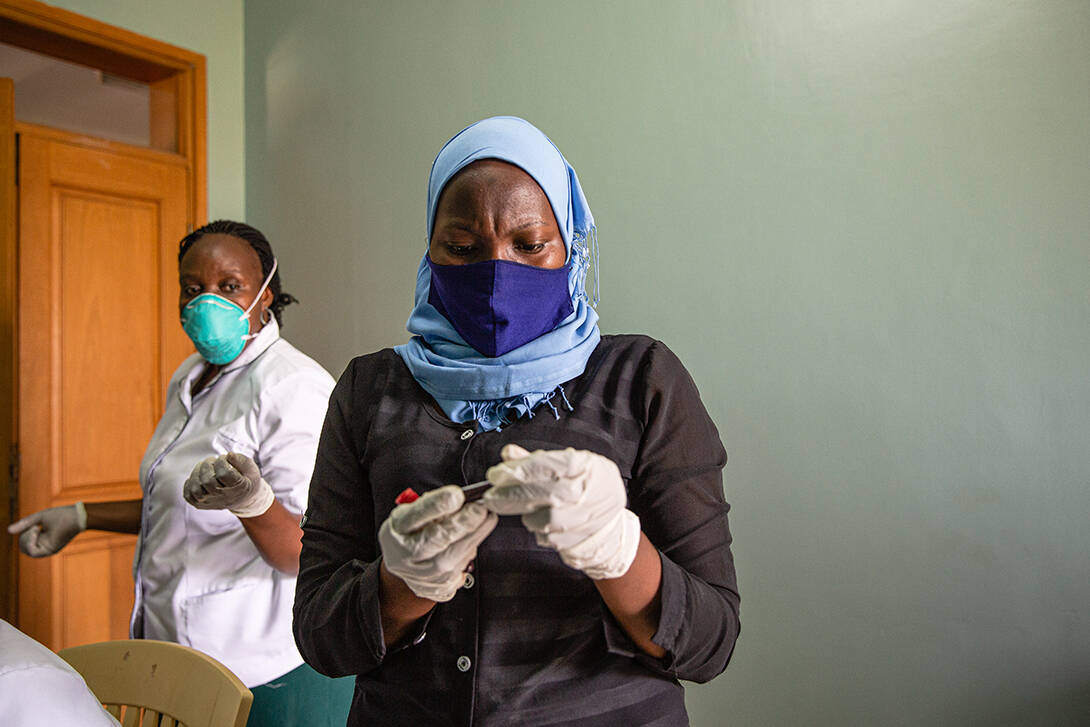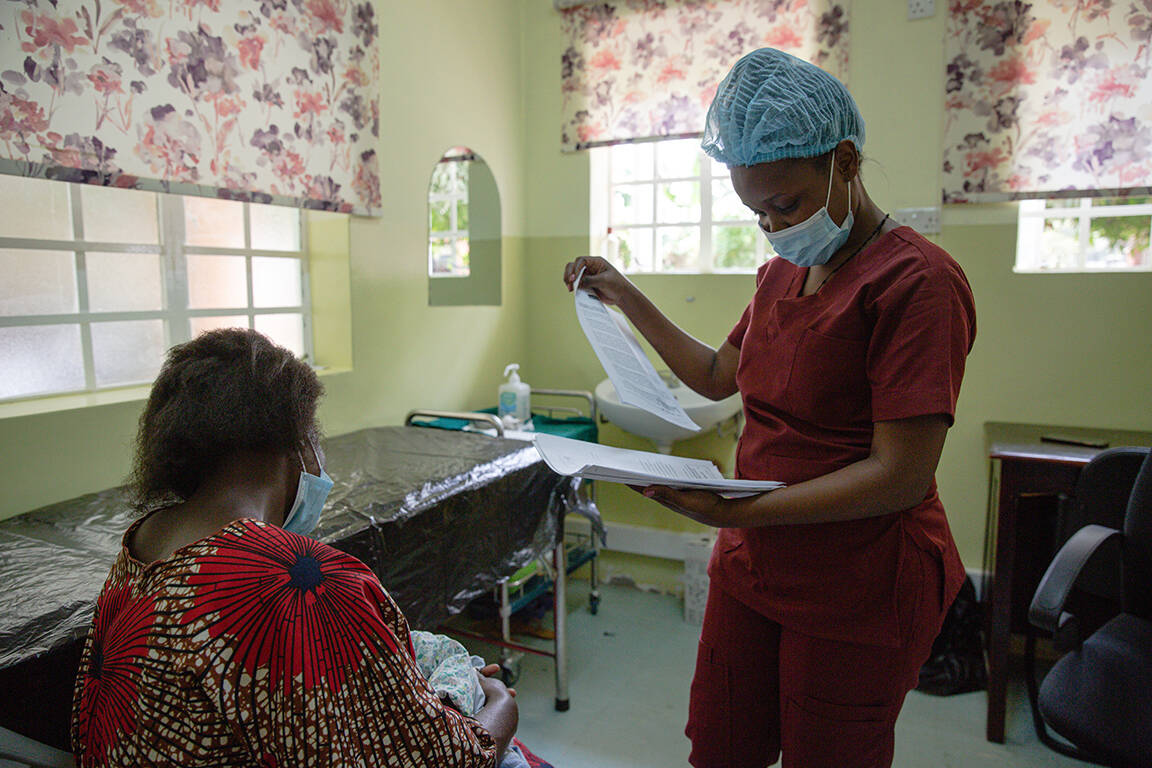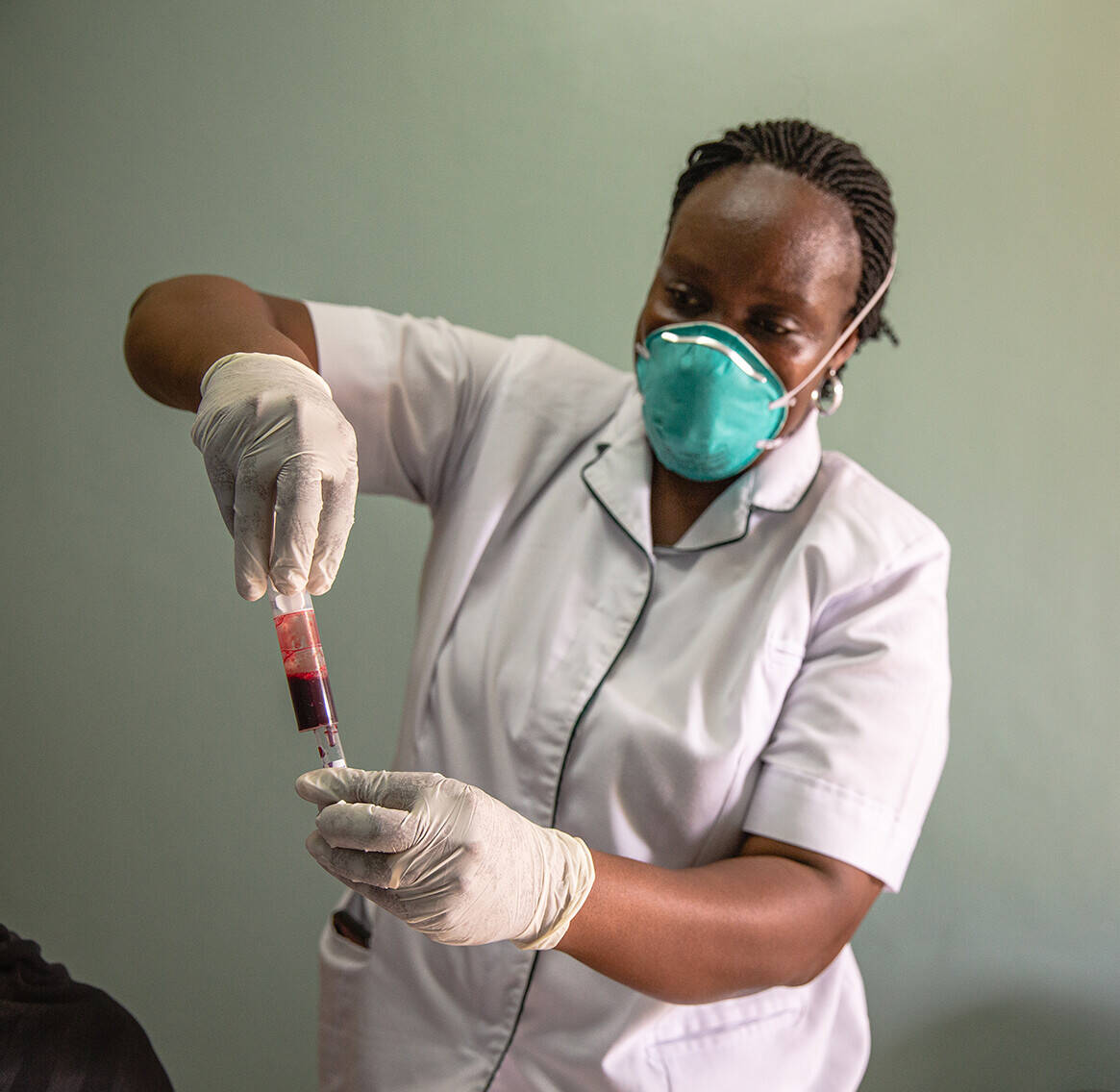The EDCTP2-funded LIFE project has also focused on point-of-care testing of maternal viral load to identify babies at high risk of infection, as well as HIV testing of infants. In this project, testing was carried out at the time of birth.
Pont-of-care testing for HIV – to detect infection or to measure viral load – is becoming more feasible. It will reach more women if it can be introduced in peripheral primary healthcare facilities, close to communities. The LIFE project team conducted two studies to evaluate the utility of point-of-care testing at such sites.
The first study, which enrolled more than 6000 pregnant women with HIV in Mozambique and Tanzania, explored whether maternal viral load monitoring at delivery could identify more high-risk babies than the standard clinical assessments, leading to more babies benefiting from intensive prevention efforts. Although the number of high-risk babies identified was significantly higher with point-of-care testing, more than 40% of babies did not receive intensive prevention.
The second study assessed whether HIV testing of neonates at birth, rather than at 4–8 weeks as is more usual, was feasible in primary care and would improve outcomes by enabling antiretroviral treatment to start earlier. Although survival benefits were seen at 6 months, these had disappeared by 18 months. The project team speculates that this was due to the lack of child-friendly antiretroviral treatments, leading to reduced adherence.
In LIFE2Scale, the LIFE team is determining whether the two point-of-care testing strategies can be better integrated into primary health care systems to guide initiation of antiretroviral treatment of babies soon after birth. The intervention also includes strengthened engagement with mothers, while more palatable antiretroviral drugs will be provided, to ensure that early identification of elevated risk or infant infection leads to both initiation of antiretroviral therapy and sustained use during infancy and beyond.


scroll down
After a year, one new HIV infection was detected in the intervention group, compared with six in the control group. Although not statistically significant, as the COVID-19 pandemic disrupted recruitment, this suggests that the strategy is an effective way to tackle the last remaining cases of mother-to-child transmission.
Building on this success, the team has been awarded funding from Global Health EDCTP3 for a successor study, PROMISE-ZERO, which is evaluating whether the approach can be applied in a wider range of health centres. Focusing on Zambia, the project will test the integrated approach in two maternal and child health centres in Lusaka and in 26 centres in Zambia’s mostly rural Eastern Province.
Although more women than ever are receiving antiretroviral therapy to keep their HIV infections in check, transmission of HIV from mothers to infants is still occurring – an estimated 130,000 cases of motherto-child transmission were seen in 2022. Many of these cases arise during breastfeeding.
Mother-to-child transmission can be prevented by providing women with antiretroviral drugs during pregnancy, and by prophylactic antiretroviral use in infants of mothers living with HIV. However, for safety and economic reasons, antiretroviral therapy use in infants needs to be targeted to those at highest risk of acquiring HIV – those who are being breastfed by a mother whose HIV is not being adequately controlled and who therefore carries a relatively high viral load.
The EDCTP2-funded PROMISE-EPI project has evaluated a novel approach to efficiently identify babies at risk. It took advantage of the high take up of routine vaccination at 6–8 weeks, a contact with the health system that provides an opportunity to assess the viral load of mothers living with HIV. Using a rapid point-of-care test based on the widely available GeneXpert platform, the project team was able to detect high viral loads on the spot and immediately start antiretroviral use in babies at risk.
In a trial in Burkina Faso and Zambia, with very different health systems, the team screened 34,000 mothers and enrolled more than 1500 who were found to be HIV-positive. When a high viral load was detected at a vaccination visit, the baby was placed on antiretroviral therapy with lamivudine syrup, which was continued for a year or until one month after the end of breastfeeding.
Two EDCTP2-funded projects have examined novel ways to prevent young babies from becoming infected with HIV.

Preventing and treating HIV infection in young children